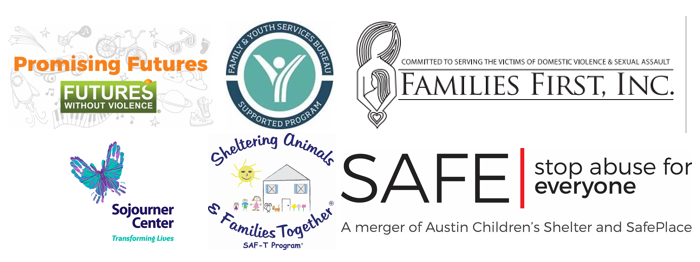Supporting Family Resiliency through Relationships with Animals Part 2: Sheltering Animals & Families Together (SAF-T)® – Actionable Insights from the Field

Part 2: Sheltering Animals & Families Together (SAF-T)®– Actionable Insights from the Field
This webinar is second in a three-part series. To learn more about Supporting Family Resiliency through Relationships with Animals and register for Parts 1 and 3, please click here.
Wednesday, May 5th, 12-1:30pm PST / 3-4:30pm EST
This dialogue will be recorded and closed-captioned. The slides, recording and transcript will be posted here.
Click here to view the webinar slides (PDF)
Click here to view the closed-captioned Zoom webinar recording
Click here to download the closed-captioning transcript (Word)
Description:
In Part 2 of this webinar series, the presenters will share step-by-step strategies employed to transform programs and domestic violence shelters into animal-friendly spaces. Presenters will represent both inner-city and rural domestic violence programs and also include discussion on key collaborations and partnerships when becoming an animal-friendly domestic violence program.
Part 2 Learning Objectives:
Participants will:
- Identify key organizational strategies to begin the process of becoming an animal-friendly space
- Understand the different benefits & challenges of inner-city and rural settings when considering becoming an animal-friendly program
- Understand the importance of partnerships when becoming an animal-friendly domestic violence program.
Presenters:
- Vickie Pait, Founding Executive Director, Families First, Inc. Domestic Violence and Sexual Assault Shelter and Services, (Whiteville, N.C.)
- Julie Peterson, Co-Director, Sojourner Center, (Phoenix, AZ)
- Zandra Gauthier, Shelter Operations Manager, SAFE- Stop Abuse for Everyone, (Austin, TX)
- Yvette Mendoza Rouen, VP of Residential and Support Services, SAFE- Stop Abuse for Everyone, (Austin, TX)
Facilitators:
- Wendy Mota, Program Manager, Children & Youth Program, Futures Without Violence
- Allie Phillips, Animal Protection & Human-Animal Interaction Attorney Founder & CEO, Sheltering Animals & Families Together (SAF-T)®
Resources:
- Click here to download Start-Up Manual – Sheltering Animals & Families Together (SAF-T)®
- Click here to download Shelter Pet Policy – SAFE-Stop Abuse for Everyone
Questions? Accessibility Needs? Please contact Anima Shrestha at ashrestha@futureswithoutviolence.org.
These webinars are supported by Grant Number 90EV0434 from the Administration on Children, Youth and Families, Family and Youth Services Bureau, U.S. Department of Health and Human Services. Points expressed in this webinar series are those of the presenters and do not necessarily reflect the official positions or policies of the U.S. Department of Health and Human Services.


